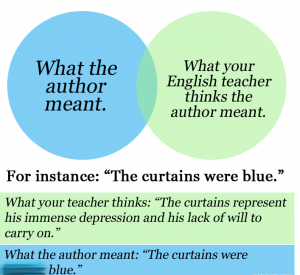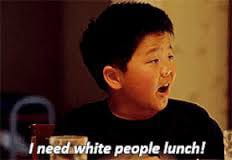Cavender, G., Bond-Maupin, L., & Jurik, N. C. (1999). The construction of gender in reality crime TV. Gender & Society, 13(5), 643-663. Retrieved from
http://prx.library.gatech.edu/login?url=https://search.proquest.com/docview/215735706?accountid=11107
Source 1– The research paper emphasises the significance of the blurry lines between reality and fiction of the crime TV genre as, especially younger, audience may use this as a pedagogy of the proper representation of women. Thereby, the author strongly supports a change in mentality of women portrayal in crime TV shows. Using the first 24 episodes of America’s Most Wanted 9 as a reference, it is found that the show depicts women with the necessity of exhibiting sociability characteristics while other attributes such as technical prowess is less important. Thus, this confirms our thesis of women being victimised to a great extent. This article is particularly revealing as it highlights the grave extent at which women are perceived as either having to be subordinating or expressing emotional loss being a crime victim. In addition to that, the article discusses how the TV show uses particular cinematic effects, such as lighting and close-up shots, to exaggerate the emotional aspects of women.
Stankiewicz, J. M., & Rosselli, F. (2008). Women as sex objects and victims in print advertisements. Sex Roles, 58(7-8), 579-589.
doi:http://dx.doi.org/10.1007/s11199-007-9359-1
Source 2– Compared to my other articles, this one is unique in such that it does research on advertisement rather than on TV shows. I chose this in particular because it would give us a more holistic perspective of the general portrayal of women, specifically how, or if, they are being depicted as being victimised. In fact, from the research it shows that 10% of adverts did just that. However, this statistic proves a warped sense of reality because it is later found that two of three advertisements that feature women in fashion or adolescent magazines presented women as sex objects that are being victimised. Furthermore, this article also tries to look at the other side of the spectrum: the likelihood of women being aggressors. But as expected, the scales are tipped for women being three times more likely to be portrayed as victims than as aggressors. One rather surprising conclusion the article draws is that it believes that one of the reasons why women are much more likely to be victimised than being aggressors is because of the “backlash against women’s increasing power in society”. Moreover, the wider implication of these alarming advertisement statistics elicits the correlation with increase men’s acceptance of “rape, interpersonal violence, and gender role stereotyping”.
Neuendorf, K. A., Gore, T. D., Dalessandro, A., Janstova, P., & Snyder-suhy, S. (2010). Shaken and stirred: A content analysis of women’s portrayals in james bond films. Sex Roles, 62(11-12), 747-761.
doi:http://dx.doi.org/10.1007/s11199-009-9644-2
Source 3– In order to view how has the attitude of victimised women on TV shows has changed over time, I wanted to find a research article on a TV show that has been on air for a long time. However, there were no particular resources on this topic. Therefore, I drew inspiration from a research article about the victimisation of women in James Bond films instead. This article looks at the 195 females existing in 20 James Bond films. What the author has found that the women had many similar attributes despite the evolving times. They all play a supporting role as a “Bond Girl” stereotypically with certain level of attractiveness and body waist ratio. Despite recognising that the number of major females has increased over time, the author also raises that they have become more sexually active and more likely be recipients of physical harm. Hence, this once again confirms our hypothesis. This article raises important questions on the cinematic hierarchy as it demonstrates that, currently, society is willing to accept the aggressive nature toward the “vulnerable” female character in order to satisfy their predictability that feeds into the success of the series.
Penfold-Mounce, R. The Conversation. 24 October 2016. How the rise in TV “crime porn” normalises violence against women. Retrieved from
https://theconversation.com/how-the-rise-in-tv-crime-porn-normalises-violence-against-women-66877
Source 4– In order to counter the somewhat pessimistic articles above, I came across this article which discusses how crime dramas such as Silent Witness, Spiral, the Killing and now even reaching the fantasy world of Games of Thrones have always victimised women. The author believes that sometimes violence can be vital to create an intriguing storyline and create a purpose for the protagonist, but she feels that currently this technique is being overused. In a documentary aired on the BBC Radio 4, Boon Mackichan is worried how this exploiting the use of portrayal of vulnerable women may “bleed into our culture”. This article, unlike the others before, gives hope in TV shows as it shows that there is a rise of strong women characters that instead of being victimised, become aggressors. For example, Ruth Wilson’s character Alice in Luther. What I found this article to be particularly useful is that it gives an objective perspective into how women are being utilised, either being portrayed as a victim or an aggressor, while also offering a suggestion to the industry to reduce the abuse on the use of victimised female characters to kick off the plotline.
Jurik, Nancy C., and Gray Cavender. June 28, 2017. “Feminist Themes in Television Crime. Dramas.” Oxford Research Encyclopedia of Criminology. Oxford University Press,. Date of access 19 Sep. 2018, Retrieved from
http://criminology.oxfordre.com/view/10.1093/acrefore/9780190264079.001.0001/acrefore-9780190264079-e-17
Source 5– This article takes a look at how women characters have generally been portrayed in crime TV shows. Women began to show up in these series around the 1970s when it became apparent women were not solely substitutes for male characters, but the article suggests that they actually altered the crime genre. The feminist’s crime TV shows with female protagonists often addressed relevant women social issues. Furthermore, women as crime detectives, such as DCI Tennison in Prime Suspect, were not depicted as loners who were vulnerable, intimidated characters of the horror scenes. Instead they were portrayed as strong, smart, young females who does not only have stereotypical attributes of having more empathy than male counterparts. This article is particularly interesting as it provides a counterargument to the earlier articles which suggests that most female characters are either based upon being a companion to the dominant male character or a way to device the plotline.
Manion, A. Los Angeles Review of Books. 22, June 2015. Between Victimhood and Power: The Female Detectives of Television’s Crime Dramas. Retrieved from
https://lareviewofbooks.org/article/between-victimhood-and-power-watching-the-female-detectives-of-televisions-crime-dramas/#!
Source 6– This is very much an opinionated article that questions the industry why women characters in crime TV show cannot be detectives and women at the same time. The author picks out that despite a closing gender gap in crime TV shows, the heavily masculine connotations of detectives makes it hard for female characters to play the role freely and without repression from societal constraints. Thus, it is this social construct of a particular perception of detectives that make women characters in the shows sometimes “uncomfortably vulnerable and easily victimised”. This status quo of how women is judged differently in this area is traced back to how people working in law enforcement has the physical and emotional demands that are traditionally associated with male. Thereby, this article raises an interesting argument on how contractualism has brought us to a stage where it is still considered the norm to expect women in crime TV shows to be “attractive, tall, and slim with long flowing hair” and perhaps it is time to untangle our polarising thought that masculinity and femininity are opposites.






